Keeping things simple
You can find just about anything and everything to do with play on the Internet, which is fabulous but can also be quite daunting. For me, I like to keep things as simple as possible. When I’m wanting to set up a fun play idea for Possum (2.5 years), I want to get it started quickly, rather than taking half the day (or make an extra grocery trip) to get it all ready.
So here I have decided to (hopefully) inspire you to introduce pasta into your play sessions with your children and consider this simple approach to colouring it.
There are so many different types of pasta! Whatever you have in the pantry would work just fine. There are a few things that I really love about using pasta in play. Firstly, it’s something that I can stored for long periods of time and use over and over again for different activities or sensory type play.
Playing with pasta is one activity that we’ve done a few times before, but to be honest, rarely do I colour it. I’ve not often felt the need to, especially if I can provide a few different varieties of pasta from the kitchen pantry. The differing sizes and textures make them interesting and fun to explore.
But of course if you are wanting to colour the pasta pieces then it will add another dimension to your play. It will provide an opportunity to talk about colour names and, if your child is old enough to get involved in the dyeing process, discussing what colours comes from mixing two or three colours together. Patterning and sorting are also great ways to incorporate some teaching using coloured pasta.
How to colour pasta for play
So forget about the vinegar or the alcohol based hand sanitiser you see everyone recommend you add, the truth is I don’t think you actually need it. If you’re able to give the pasta long enough to dry then it will stain without any problems and, in my own experience, the colours will not rub off. So let’s keep it simple and get the play happening!!!
You will need –
- Pasta (whatever you have in the pantry)
- Plastic ziplock lunch bags
- Food colouring
Add your pasta to a ziplock bag with a few drops of food colouring and SHAKE!!!! Depending on what type of pasta you are colouring will depend on the amount of food colouring you need and the shape of the pasta. The spiral shaped pasta was the most difficult to colour as it took lots of colouring to get inside the spirals.
Once you see the pasta is coated to your liking, simply lay the pasta and allow it to dry. Depending on how many drops of food colouring you added will depend on how long you’ll need to leave it. I waited about half an hour for the above pasta to be coated. If you find your pasta is struggling to become completely coated, add a few drops of water to the bag, but not too much as you don’t want soggy pasta.
So there you have it, a simple way to colour pasta that will get to playing in no time.
Offering your child coloured pasta can open up the doors to many learning opportunities. You could simply ask your child to group/sort the pasta according to colour, shape or size or ask them to create interesting a detailed patterns (red, yellow, blue, red, yellow, blue). The possibilities are quite endless.
What other ways could you engage your child with coloured pasta?
Here are some other ideas that might interest you –
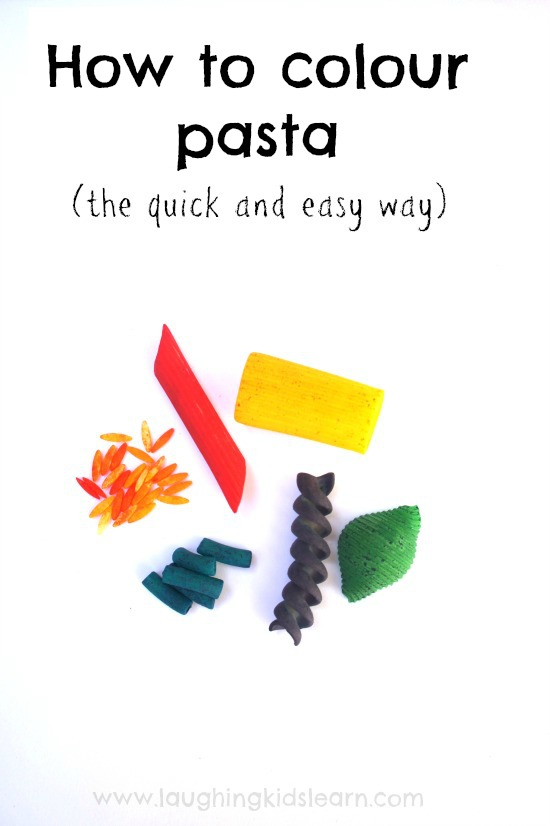
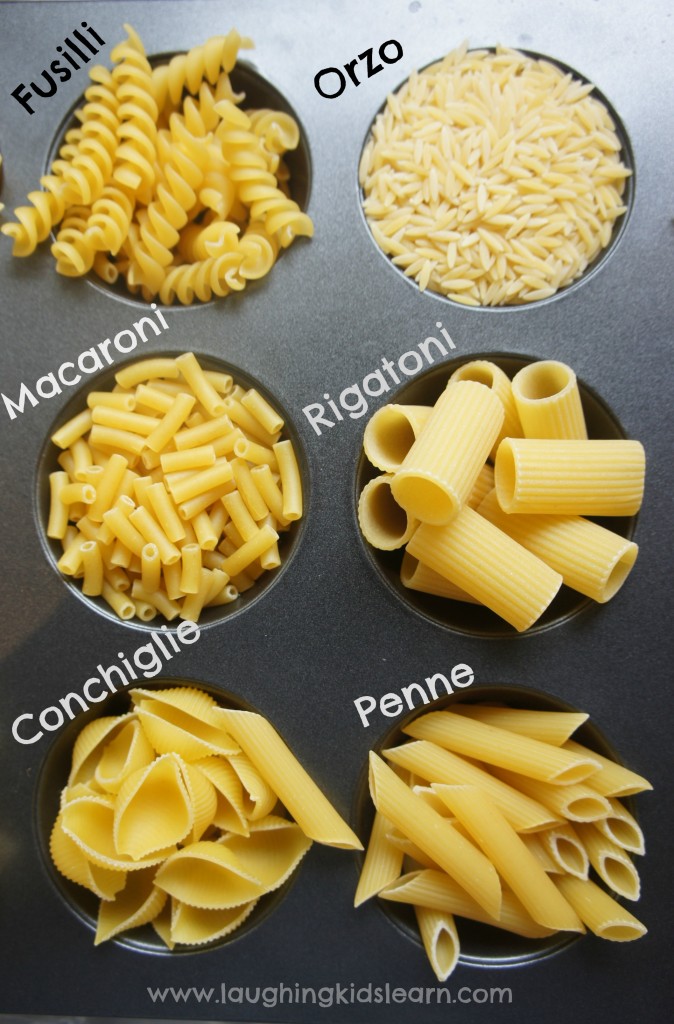
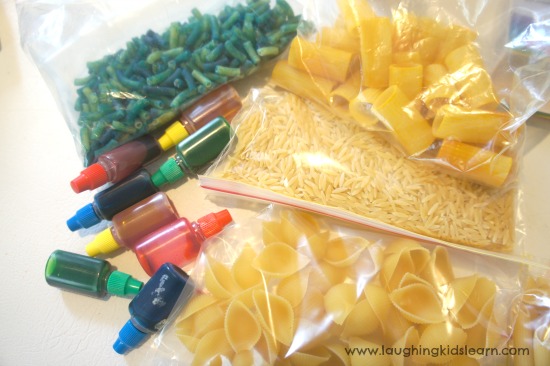
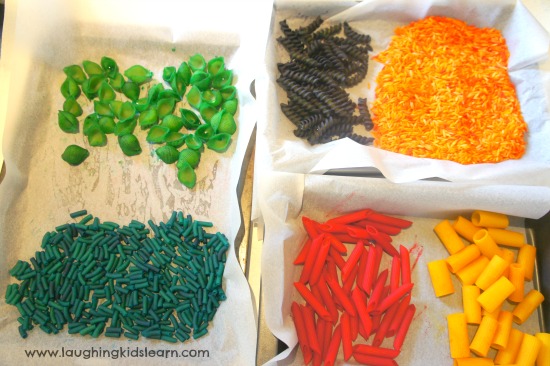
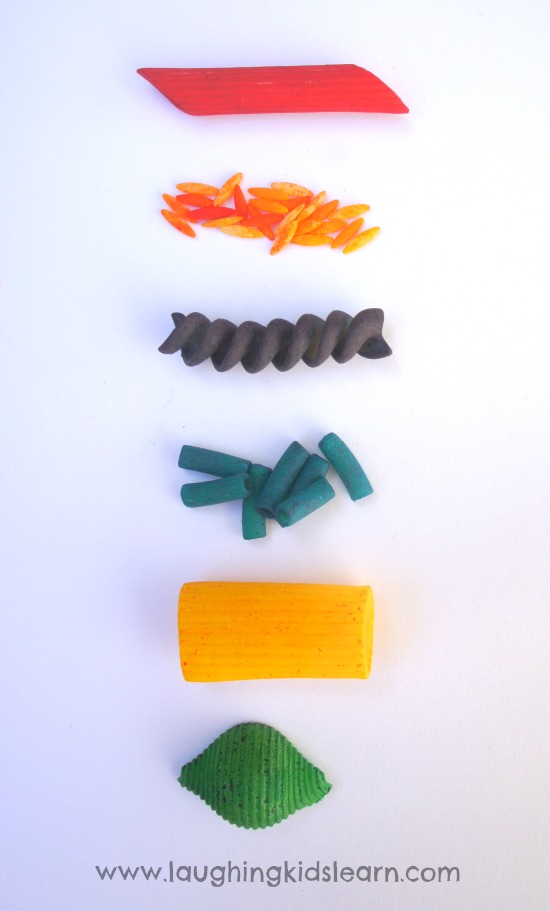
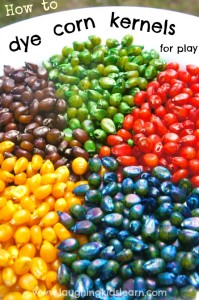
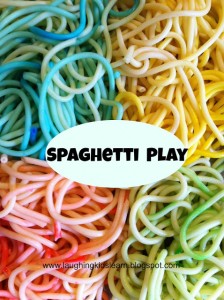
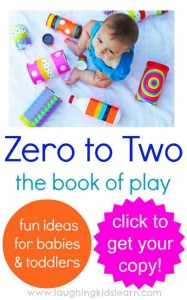

Use rubbing alcohol instead of water— it dries quicker!
Thanks so much for the tip Andy! I appreciate that. I think a lot of people get a little turned off using rubbing alcohol, however, I’ve added your comments to the end of this post so others might read your advice. Thanks again.
I use white vinegar. It’s not toxic (although, not tasty), so that might alleviate fears with alcohol. Dry time is about an hour for pasta and about an hour and a half with rice (I always have to stir the rice half way through the drying process to make sure the rice at the bottom gets dry).
Super helpful. 😀
May I use icing colors?
I’m sure that would work too, just use a few drops. Thanks for your comment Eva. 🙂
Yes. Also, liquid water colors work really well, and the colors stay a little truer.
Great feedback Jessica. Do they not make a pasta soggy?
Hi
I was hoping you use you image of the pasta with my students to design a key as part of their science work. This image would need to be uploaded onto our online site as well as printed in their leaflet. Can you please advise. The image would be used for educational purposes only.
Helen
Hi Helen,
I give you permission to use one image. Thank you for contacting me.
How do you get the colours of pasta so vibrant. When I tried this my pasta colours came out so wishy washy. I used liquid food colouring from my local supermarket. Do you use a different type of colouring. Thank you
Hi Pauline. Thanks for your comment. It can be a bit tricky. You need to use as much food colouring as you can without making your pasta soggy. If you felt like your colour was a little wishy washy, I’d probably suggest colouring your pasta a few time over a few days, just enough that it doesn’t make the pasta too damp. Might be worth trying that? Best of luck with it Pauline.